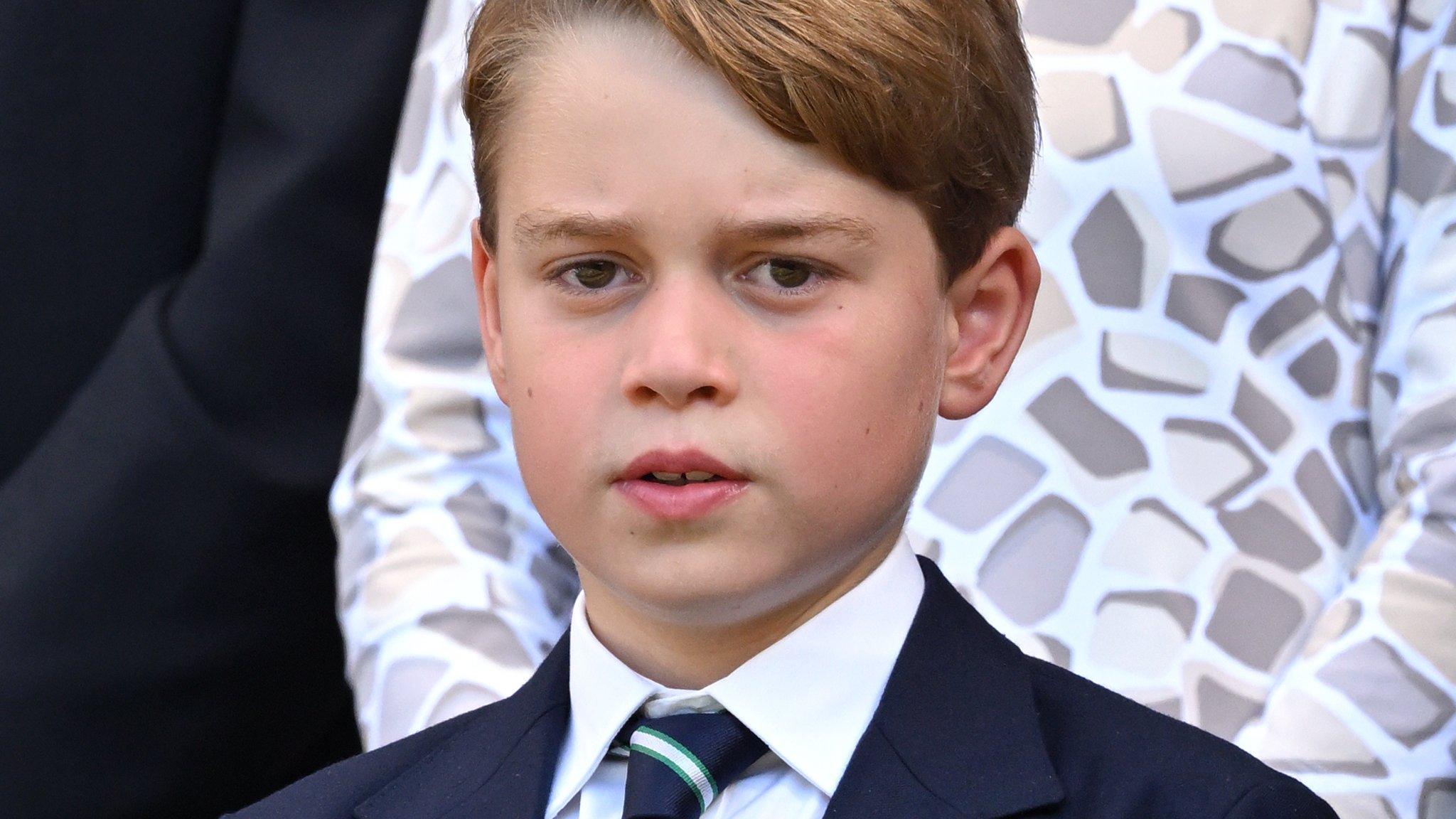Controversial diamond won't be used in coronation
- Published
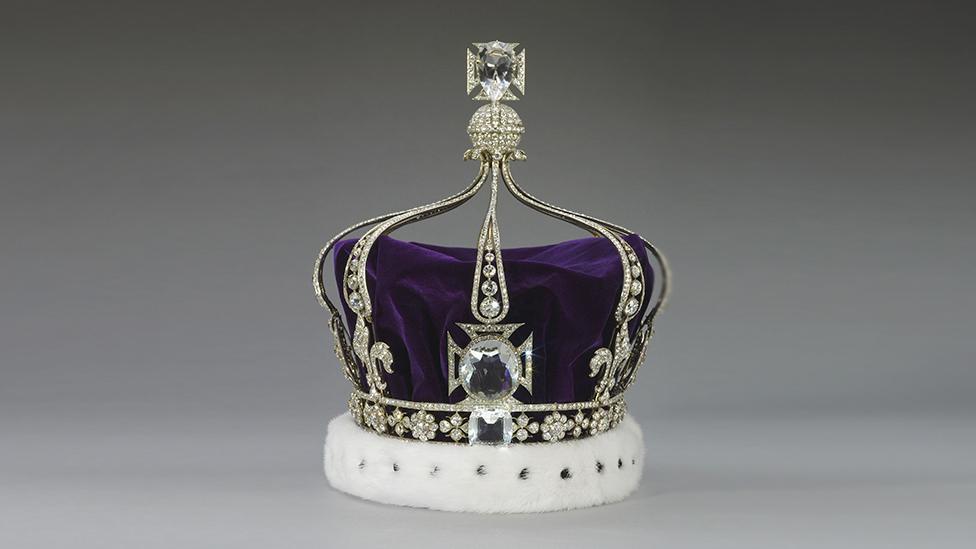
The Queen Consort will be crowned with Queen Mary's Crown (pictured), avoiding the presence of the Koh-i-Noor
The controversial Koh-i-Noor diamond will not be used in the coronation, says Buckingham Palace.
Instead Camilla, the Queen Consort, will be crowned with Queen Mary's Crown, which has been taken out of the Tower of London to be resized for the 6 May coronation.
It is thought to be the first time in "recent history" that an existing crown will be "recycled" for a coronation.
Diamonds from Queen Elizabeth II's jewellery will also be added.
Camilla, who will be crowned alongside the King at Westminster Abbey, has had to cancel her public engagements this week after testing positive for Covid.
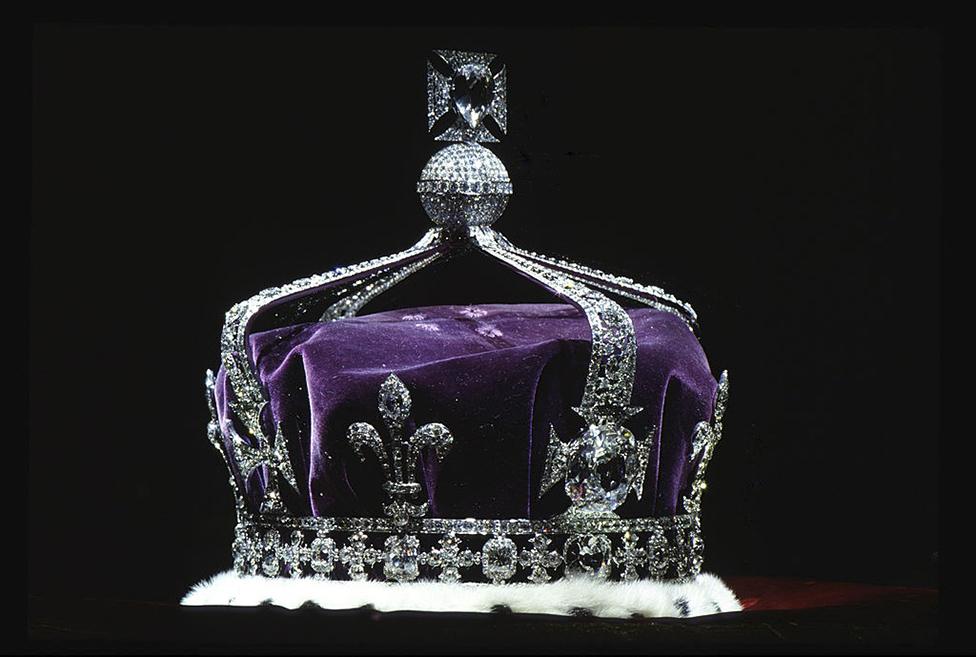
The Queen Mother's crown (pictured), which has the Koh-i-Noor diamond fitted in the front middle cross, will not be used during the ceremony
Ownership of the Koh-i-Noor, one of the largest cut diamonds in the world, has been disputed, and there were concerns about a diplomatic row with India if it had been used.
India has made several claims to be the rightful owner of the diamond, which was used in the coronation of the Queen Mother.
Instead, Buckingham Palace says Camilla will be crowned with Queen Mary's crown - and claims its re-use is in the "interests of sustainability and efficiency".
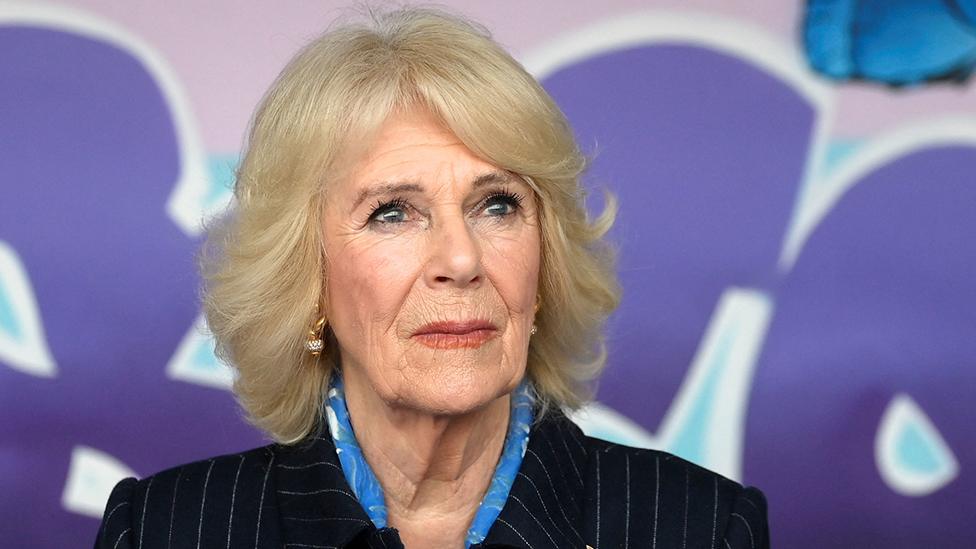
Camilla, the Queen Consort, tested positive with Covid this week
In a tribute to the late Queen Elizabeth II, the crown will be reset using diamonds from her personal jewellery collection, using diamonds known as Cullinan III, IV and V.
These diamonds were worn by the late Queen in brooches and were taken from the Cullinan diamond, discovered in South Africa.
King Charles III will wear the St Edward's Crown, regarded as the centrepiece of the Crown Jewels. It is back on display at the Tower of London after being modified to fit the monarch.
It was first made for King Charles II in 1661 as a replacement for an earlier crown which was destroyed in the aftermath of the English Civil War.
The late Queen Elizabeth II also used the St Edward's Crown during her coronation but other monarchs through history have opted for smaller or custom-made crowns.
What we know about the Coronation long weekend so far:
Saturday 6 May: Coronation service in Westminster Abbey; coronation carriage procession; Buckingham Palace balcony appearance
Sunday 7 May: Concert and lightshow at Windsor Castle; Coronation Big Lunch street parties
Monday 8 May: Extra bank holiday; Big Help Out encouraging people to get involved in local volunteering
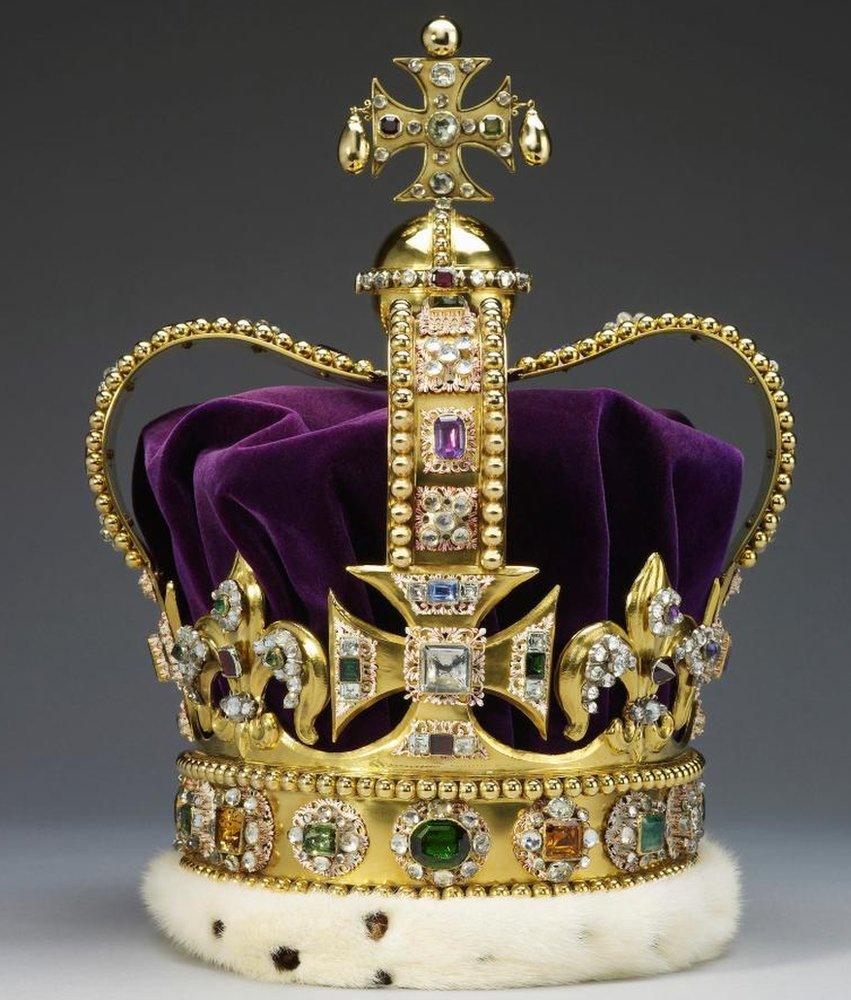
The King will wear the St Edward's Crown, regarded as the centrepiece of the Crown Jewels collection
Although it is not the largest or most flawless diamond in the world, the Koh-i-Noor's history has marked it out as one of the most controversial.
Competing theories and myths about the origins of the stone stretch over many years but historians agree it was taken from India by Nader Shah, an Iranian ruler, in 1739.
Through plunder and conquest it changed hands several times before being signed over to a British governor-general in 1849 following the annexation of the Punjab.
The circumstances in which it was signed over to the East India Company - which had conquered swathes of the Indian subcontinent - by a defeated boy king are disputed.
It was reputedly a "gift" but Anita Anand, a BBC journalist who has co-authored a book on the Koh-i-Noor, said: "I don't know of many 'gifts' that are handed over at the point of a bayonet."
Prince Albert had it recut in the 1850s to make it shine brighter and it was set in a brooch for Queen Victoria. It was eventually incorporated into the Crown Jewels.
Claims to rightful ownership of the diamond have also been made by some in Pakistan and Afghanistan.
- Published2 May 2023
